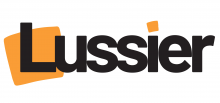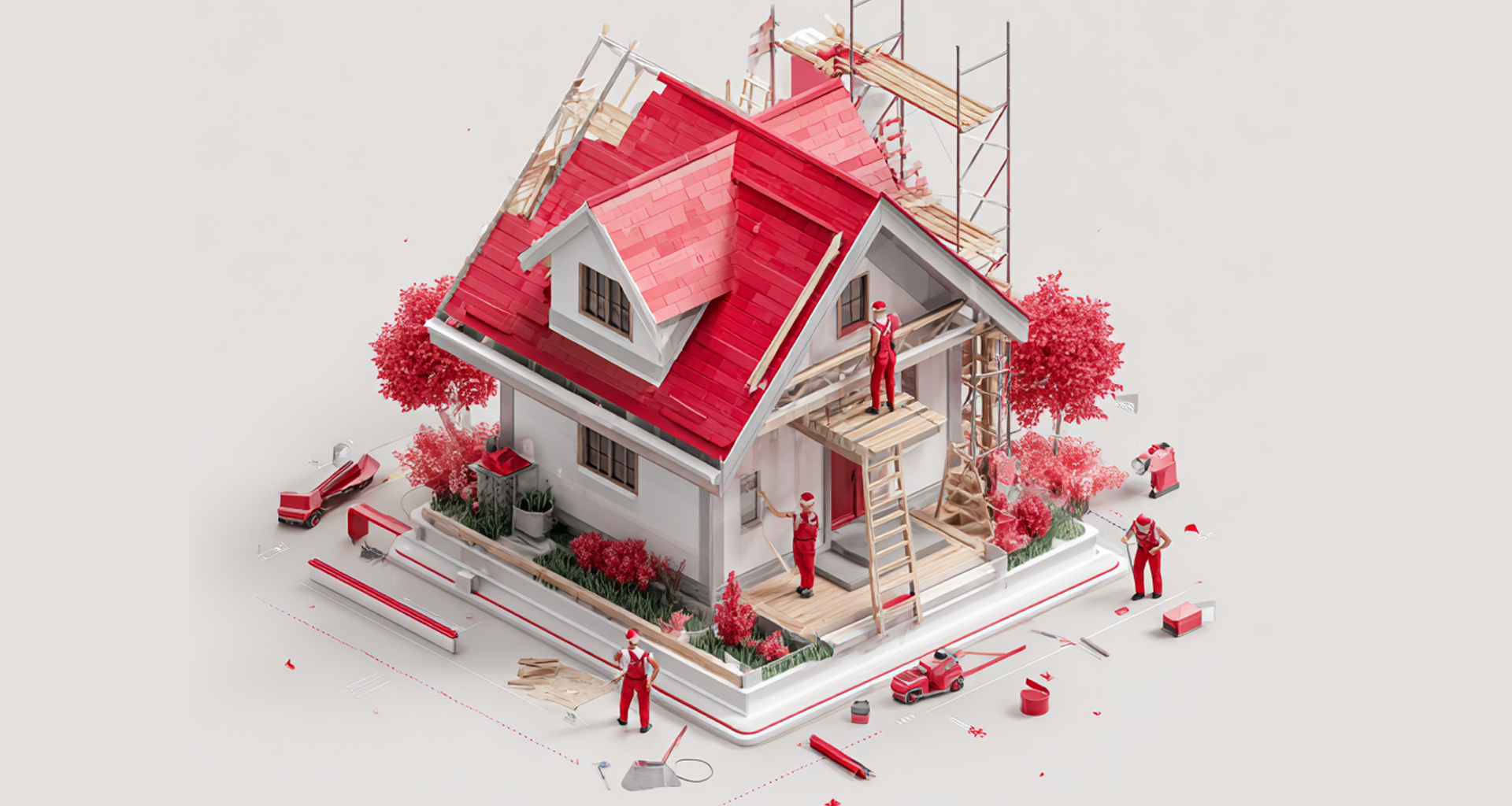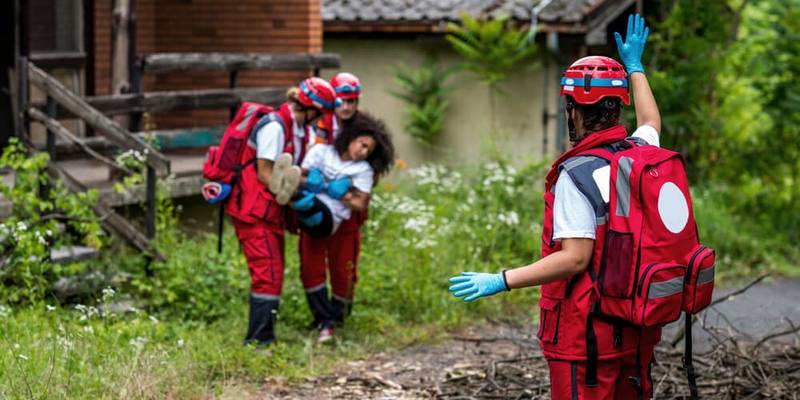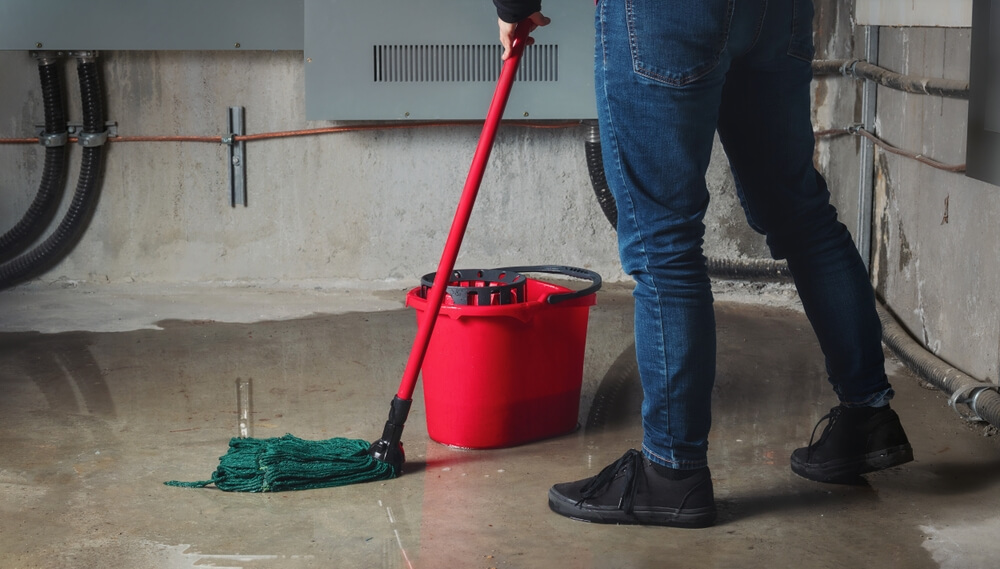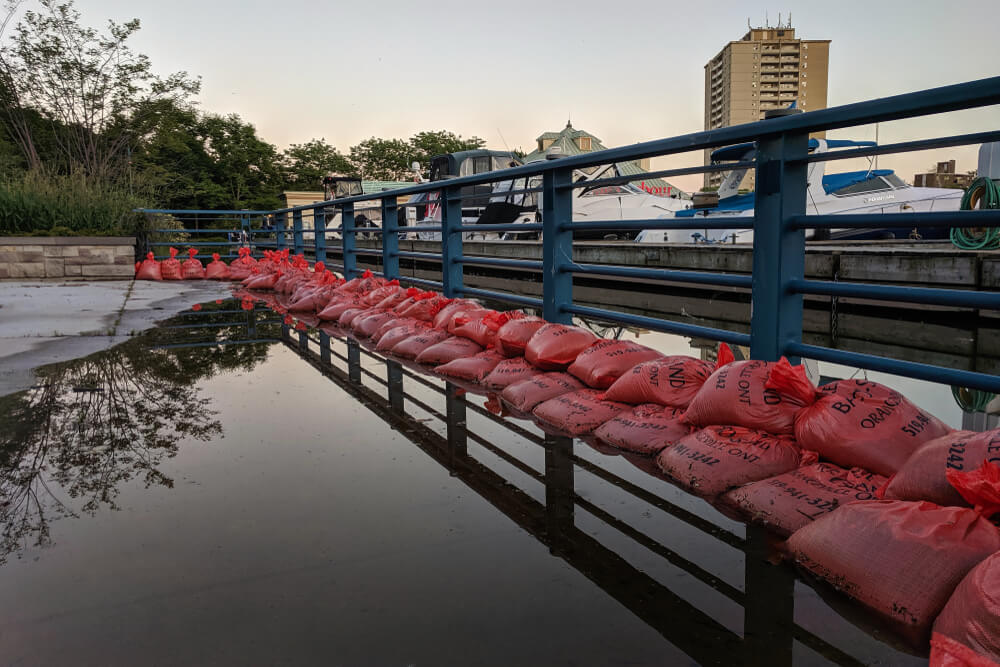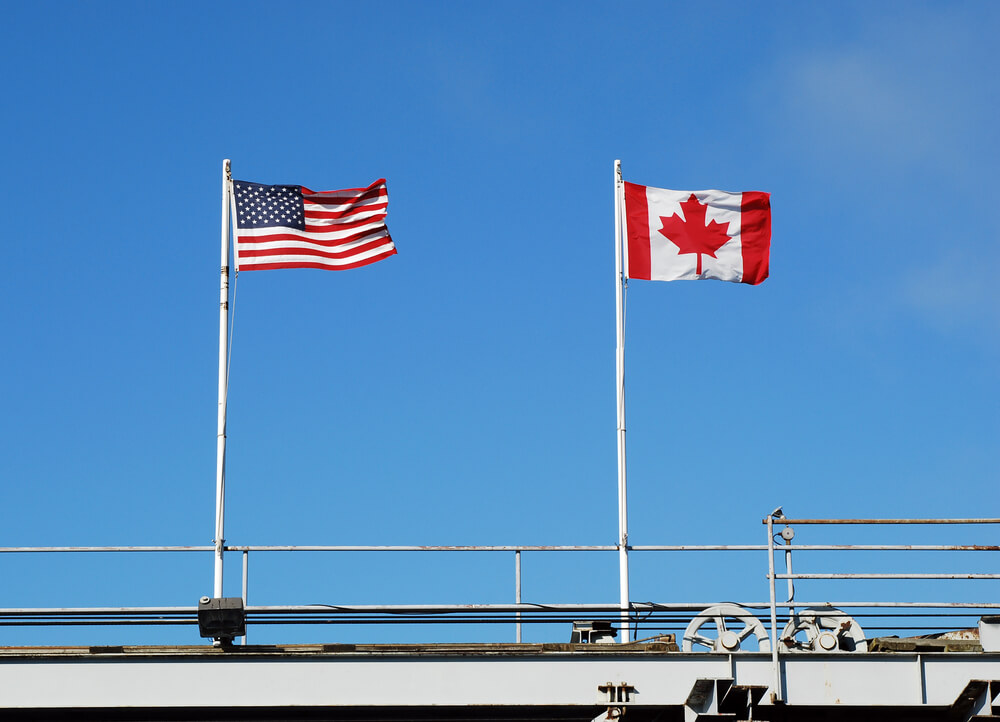Cheap Manitoba Home Insurance Quotes
Compare and save an average of $417* on Manitoba home insurance. Get a better rate.
Compare Manitoba home insurance quotes from providers you trust
Jump straight to...
- Home insurance in Manitoba
- Types of home insurance in Manitoba
- Add-ons to home insurance coverage in Manitoba
- What a standard home insurance policy may not cover in Manitoba
- How to get Manitoba home insurance quotes on RATESDOTCA
- What types of risks do homeowners face in Manitoba?
- Factors that determine your Manitoba home insurance rates
- How to get your cheapest Manitoba home insurance premium
- Frequently asked questions about Manitoba home insurance
Home insurance in Manitoba
Owning home insurance is not a mandatory step in your homeowner’s journey, but, it is a key facet you cannot possibly ignore. Some mortgage lenders in Canada require homeowners to have property insurance, but it is not a law. This is also one of the reasons why everyone insists on having home insurance.
In Manitoba, the Manitoba Securities Commission provides a regulatory framework for the insurance sector. Through its administration of The Insurance Act, Financial Institutions Regulation Branch (FIRB) is responsible for the licensing of all insurers operating in Manitoba, regulating insurers established in Manitoba and managing consumer and policyholder complaints with respect to insurers.
Home insurance products in Manitoba are designed to provide protection for homeowners against unexpected events that may cause damage or loss to their property or belongings.
Types of home insurance in Manitoba
Even though insurance policies may vary among different insurance providers in Manitoba, it is important to review the specific coverage details, limits, deductibles, and exclusions of any policy you consider. Some policies may also offer optional add-ons or endorsements to customize your coverage based on your needs. Here is what the policy would generally cover:
Home insurance coverage:
- Property and building: This coverage protects both the structure(s) on your home, as well as the property itself, from a variety of perils. The insurance policy protects the structure from incidents such as fire, theft and water damage, among others. Because some policies may require additional coverage for secondary structures, like a garage or guest house, consult your insurer if anything is unclear.
- Contents and personal property: This coverage protects your contents and personal possessions such as furniture, clothing and sports equipment, against theft and vandalism. Some items, like fine art and expensive jewelry, may not be protected under a standard policy. Excluded items can be protected with additional coverage.
- Additional living expenses: This coverage protects your temporary housing costs in case of an untoward event leading to temporary displacement by an insurable event. For example, if damage to your home forces you to spend a week at a hotel, additional living expenses protection will cover the cost of the room and food, up to a certain amount.
Liability coverage
- Personal liability: This coverage provides protection against liability in the event someone is accidentally injured on your property.
- Voluntary medical payments: If someone is injured unintentionally, or someone accidentally injures themselves on your property, this coverage will pay for the medical expenses for up to one year from the date of the accident.
- Voluntary property damage: This coverage is for unintentional direct loss or damage you cause to someone’s property. It also covers unintentional loss or damage to someone else’s property by a minor (12 years or under) in your care.
It is essential to shop around and compare different policies and premiums to find the best home insurance coverage and value for your needs living in Manitoba. You can also consider bundling your home insurance with other types of insurance, such as auto insurance, to save money.
Add-ons to home insurance coverage in Manitoba
In addition to the above-mentioned policies, you can purchase more coverages to further protect your home and the contents within.
These are some of the most common home insurance add-ons, also known as riders, that you can add to your home insurance policy:
- Overland water: If your insurer offers this coverage you can take it to protect your property from damage from overflowing water from nearby rivers, streams, lakes and thawing snow.
- Sewer back-up: This coverage protects your home when a main sewer backs up and causes damage.
- Earthquake: This covers losses or damage caused by an earthquake. This add-on is especially useful if your home is located in an area that is prone to earthquakes.
- Mass evacuation: In case of an untoward event like a flood or wildfire, that triggers a government issued evacuation order, this add-on coverage pays for some of the expenses you incur while being away from your home.
- Identity theft: Covers the cost of replacing important documents, such as your passport.
- Lock replacement: If you need to replace the locks on your house, this add-on provides coverage.
What a standard home insurance policy may not cover in Manitoba
No two insurance providers will offer the same policy, so it is important to compare and analyze the policy terms and conditions carefully to understand what is and isn’t covered. Homeowners should also assess their personal needs and risks when choosing a policy.
Even if you have paid for the most coverage possible, there are still some perils which an insurance company will not be able to protect you from financially. There are some 'exclusions' that insurers will not be able to insure you against, hence, it is important to be aware of such events:
- Absence from the home: An insurance provider might not protect you against damage caused to your property in your absence for an extended time. Speak to your insurance representative about actions you need to take during the time you are away, especially during winter months when pipes might freeze. Insurance coverage on your home and its contents may cease automatically if your home is vacant without prior notification to your insurance provider.
- Alterations: A homeowner will only be protected against damage to a property that occurs during an alteration to it if they have received written permission from the insurance provider to undertake the alteration. However, common repairs such as painting or fixing a broken railing are not subject to this exclusion.
- Bylaw enforcement: You are not likely to be covered for costs stemming from the application or enforcement of a bylaw.
- Damage from renters: Most insurance providers require specific coverage for landlords. A standard home insurance policy is unlikely to protect you if a renter damages the property. Tenants need to have separate insurance coverage as well.
- Earthquake: Most policies exclude protection against earthquakes, though you can add coverage in the form of an endorsement.
- Existing damage: An insurer is unlikely to cover you for damages to your property that began before you held the policy.
- Flooding: Protection from flooding is not covered in most policies, though coverage can be purchased as an endorsement.
- Volatile substance: If you have more than one gallon of a volatile substance on your property and a fire or explosion takes place, you may be denied coverage. This is likely to include gasoline.
There are also some perils for which no coverage is available. They’re referred to as ‘uninsured perils.’ For example, if your home is built on a known flood plain, no insurance protection may be available.
Recent Quotes for Home Insurance in Manitoba

Recent home Insurance Quote from Winkler, MB
Semi-detached 1,381 sq ft
July 20, 2025
Cheapest Quote
$ 77 / month
$ 919 / yearAverage Quote
$ 92 / month
$ 1,104 / yearSavings
$ 15 / month
$ 180 / year
17 %
Recent home Insurance Quote from Winnipeg, MB
Detached 1,010 sq ft
July 20, 2025
Cheapest Quote
$ 135 / month
$ 1,621 / yearAverage Quote
$ 188 / month
$ 2,255 / yearSavings
$ 53 / month
$ 636 / year
28 %
Recent home Insurance Quote from Winnipeg, MB
Detached 1,590 sq ft
July 20, 2025
Cheapest Quote
$ 141 / month
$ 1,694 / yearAverage Quote
$ 186 / month
$ 2,234 / yearSavings
$ 45 / month
$ 540 / year
24 %
Home insurance quotes are compared from Apollo Insurance, CAA, Economical Insurance, Pembridge, Square One Insurance, and SGI
How to get Manitoba home insurance quotes on RATESDOTCA
Tell us about your home
Answer some basic questions about your home. It won't take long!
Compare your quotes
See quotes from insurance companies side by side.
Choose the right coverage
Find the right protection for your home and everything in it.
Secure your rate
Connet with the provider and secure your rate.
What people say about our quotes

Based on 6,451 reviews

Was easy to apply and didn't take long
Was easy to apply and didn't take long. Prices were amazing as well. Received an email confirmation immediately after applying for.
Shaun

Fast efficient and fair
Quick quotes. Great rates. Easy to process
Trinity

Comparing Travel Insurance …
This was the only site I could find that allowed me to compare different travel insurance options. I particularly liked the ability to look at sample documents.
Toronto

Amazing
Very helpful and easy to use
Safe travels

Easy quick selection of rates
Easy quick selection of rates
J K

Great help in finding the best rate!
Great help in finding the best rate! Thanks a lot!
Ruthielyn opina
What types of risks do homeowners face in Manitoba?
Problems can come knocking at your door when you least expect it. Occassionally accidents happen because of our negligence, and sometimes it is another person’s error that lands us in trouble, while some situations are completely out of your control, or an act of nature. As a homeowner, you cannot be oblivious to the financial challenges you might be faced with in an extreme event which causes damage or loss to your property.
Manitoba homeowners must be aware of the variety of risks that they could be potentially exposed to as the owner of a property.
Here are some of the most common risks:
- Weather risks: Manitoba residents experience a wide range of weather conditions, including severe thunderstorms, heavy rainfall, snowstorms, and blizzards. These weather events can cause damage to their homes, such as roof damage, flooding, and foundation damage. It is important to understand how a homeowner can be protected against potential damage due to this risk and what is covered by insurance.
- Fire hazard: Fire is a significant risk for homeowners in Manitoba. Cooking accidents, electrical malfunctions, and heating systems are some of the most common factors causing fire damages to homes. A fire can cause extensive damage to a home and personal property and can burn a huge hole in the homeowner’s pocket if not covered by insurance.
- Theft and vandalism risks: Crime is everywhere and homeowners in Manitoba may face the risk of theft and vandalism. Burglars may break into a home and steal personal property or cause damage to the home. Vandals may also damage the home or property. Besides having good security systems, a homeowner should also check with their insurer how the contents of the home can be insured in case of theft or break-ins.
- Liability risks: Homeowners may face liability risks if someone is injured on their property. For example, if a guest slips and falls on an icy sidewalk, the homeowner may be held liable for the person's injuries even if the property is not their main residence.
- Water damage: Leaky roofs, sewer backups, burst pipes among other factors can cause extensive water-related damage to a home, electrical fittings, furniture and other personal property. This may lead to mold damage, fungus and other issues which could hamper daily life.
- Natural disaster risks: Manitoba is at risk for natural disasters such as tornadoes and earthquakes, although they are relatively rare.
It's important for homeowners in Manitoba to understand the risks they face and take steps to mitigate those risks, such as securing their home against theft, maintaining their home's plumbing and electrical systems, and having appropriate insurance coverage.
Factors that determine your Manitoba home insurance rates
To gauge risk, home insurance providers examine several factors about your home and you.
Neighbourhood
The neighbourhood hazard has a significant impact on how much premium you will pay for home insurance. For example, if the neighbourhood you live has a notorious history of crime, insurers will charge more to account for the increased likelihood of theft or criminal damage. On the other hand, if you live in a neighbourhood with low crime rates, your premium will probably be cheaper. Besides, the proximity of the dwellings to each other (detached homes, townhomes, semi-detached, apartments, etc.) increases the risk of damage due to fire or explosion. Find the estimated home insurance premium for your area.
Electrical supply
Home insurance providers are likely to deny coverage for losses caused by electrical, electronic and mechanical breakdown or disturbance due to mechanical failure, wear and tear or deterioration.
Insurance providers consider homes with aluminum wiring, knob-and-tube or any low-amp service to be at greater risk of fire. While some of these circuits are perfectly safe, many have deteriorated over time. They may be willing to provide coverage at high premium if your old circuit passes an inspection from a licensed electrical contractor. To mitigate risk, most insurance providers will give you a few months to upgrade your electrical supply. If you don’t oblige, they’re likely to deny coverage.
Heating system
A building is considered higher risk by insurance providers if it has old wiring, piping, heating sources, foundations and roof. A heating source such as a wood-burning stove is considered high risk and can result in a higher home insurance premium. If instead, your home is heated by hot-water radiators or forced air heating, which insurance providers consider lower risk, you’re likely to pay less.
Pets
Insurance providers aren’t very paw-sitive about pet owners because they factor in the risk of injury in your home, including those that could result from an animal bite. Insurance companies consider some dog breeds especially problematic which can result in higher premiums or coverage being denied. While every home insurance provider is different, the most common breeds likely to cause issues are the following dogs:
- Dobermans
- German Shepherds
- Great Danes
- Pit Bulls – which are currently banned in Ontario
- Rottweilers
- Siberian Huskies
- Staffordshire Terriers
Most exotic and wild animals are unlikely to be insured. For example, wolves, exotic cats and alligators. Learn how different pets affect your home insurance premium.
Plumbing
Insurance providers aim to avoid risk, and flood risk especially. If your home has been upgraded with plastic or copper pipes, you may receive a lower premium. On the other hand, if your plumbing is susceptible to cracks and leaks, your premium could be more expensive. The latter is more often an issue in older homes.
Proximity to help
The closer your home is to a fire hydrant and emergency services such as a hospital, the lower your home insurance premium may be. Homes in rural areas tend to have higher premiums, in part because of their distance from emergency services. In the event of damage to the home due to a covered peril such as a fire, or someone being injured on your property, help is harder to access.
Renovations and betterment
When you renovate your home to improve its overall value, your home insurance premium is likely to increase. This is because the policy is designed to cover the cost of damage in the event of an accident.
For example, if you add a swimming pool, along with the added fun of a pool, any insurance provider may consider there to be additional potential safety risks. This, in turn, can lead to an increase in your home insurance premium.
On the other hand, if renovations increase the safety of your home such as replacing the pipes or upgrading the wiring, your premium could go down.
Replacement cost
Replacement cost refers to the cost of rebuilding your home completely following damage from a covered peril such as a tornado or a devastating house fire. If you opt for a lower replacement cost, you may be eligible for a lower premium.
Roof
Newer roofs are designed for proper ventilation, minimizing the chance of mold or dampness getting into your home. Modern tiles are made of lighter and more durable materials than the old slate ones, making them more resistant to storm damage and less likely to hurt someone if they come flying off. This increased protection, along with decreased liability, means homes with new roofs are more popular with insurers.
Security system
You can reduce your home insurance premium by installing a security system. Its presence will reassure your insurance provider that your home has adequate protection from intruders which, in turn, could persuade them to offer a lower rate.
Bundling home and auto insurance
One of the easiest ways to reduce your insurance costs is to bundle your home and auto insurance policies so that each is held by a single provider.
For example, if you have an auto insurance policy and a home insurance policy, you can choose to have each held by the same company. This means you’re doing more business with them. In turn, they will often pass on considerable savings to you.
Bundling options are also available for consumers interested in multiple forms of coverage. For example, you can insure multiple residences with the same insurance company that provides coverage for your primary residence.
How your home is used – as a business or home office
If you’re operating a business from your home, you’re likely to pay more for home insurance coverage. The type of business it is will be important. For example, if your business relies on a laptop and nothing more, you won’t need a complex policy. On the other hand, if you’re running a daycare there’s more risk and your premiums will be higher.
If your business has to do with renting out a unit on a temporary basis, you should inform your insurance provider. A standard home insurance policy may not allow it. In many instances, a specific sort of coverage is needed for homes that are used as rental properties.
Claims history
Insurance providers consider your claims history to be an indication of how likely you are to make a claim in the future. If you’ve never made a claim before, you may be rewarded with a lower home insurance premium. On the other hand, if you’ve made claims in the past, your rate may be higher.
Credit score
In some provinces, insurance providers are allowed to use your credit score when offering you a quote. Your consent is required, and, by law, the insurer is only allowed to use the information to offer a lower premium. In other words, if you have a poor credit score, they’re not allowed to punish you with a higher premium.
Lifestyle
Your age, occupation and whether you smoke are personal details that insurance providers use to gauge what sort of risk you are. They’ll also want to know if you rent out a portion of your home. We encourage you to be honest when answering these questions because any false information can be used to deny a payout in the event of a claim.
Here are some factors that can help lower home insurance premiums in Manitoba:
- Increasing your deductible: Raising your deductible, which is the amount you pay out of pocket before your insurance coverage kicks in, can lower your premiums. However, it's important to choose a deductible that you can afford in case you need to file a claim.
- Installing home security systems: Homeowners can receive discounts on their insurance premiums by installing security systems such as burglar alarms, motion sensors, or surveillance cameras. These systems can help reduce the risk of theft or vandalism.
- Bundle policies: Many insurance companies offer discounts when you bundle your home and auto insurance policies with them.
- Maintaining a good credit score: In Manitoba, insurance companies may consider your credit score when determining your insurance premiums. Maintaining a good credit score can help lower your premiums.
- Improving home safety features: Upgrading home safety features such as smoke detectors, fire alarms, and sprinkler systems can reduce the risk of damage from fire or smoke, which can lower your premiums.
- Choosing a newer home: Newer homes may be less expensive to insure than older homes, as they typically have newer electrical, plumbing, and heating systems that are less likely to fail.
- Living in a low-risk area: Homes located in low-risk areas, such as those with lower crime rates or less exposure to natural disasters, may have lower insurance premiums.
- Avoiding filing small claims: Frequent small claims can lead to higher premiums, as insurance companies may consider you a higher risk. It's important to only file claims for severe damage or losses.
- Installing a backup sump pump: In Manitoba, sewer backups can cause considerable damage to homes. Installing a backup sump pump can help prevent sewer backup, and insurance companies may offer discounts for this feature.
- Reviewing and updating coverage regularly: It's important to review your insurance coverage regularly and update it as needed to ensure that you are not paying for coverage you don't need and that you have adequate coverage for your home and personal property.
Frequently asked questions about Manitoba home insurance
Here’s everything you’d like to know about Manitoba home insurance...
How can I find the cheapest home insurance in Manitoba?
The best way to find the cheapest home insurance in Manitoba is by shopping around. Using a rates aggregator like RATESDOTCA can help you get quotes from 50+ providers in just a click. You must compare quotes from different providers to get the best rate for your needs and requirements.
Why is home insurance in Manitoba so cheap/expensive?
Home insurance premium in Manitoba can depend on a number of factors, such as the location of your home, the age and condition of your home, the type of coverage you choose, and your personal circumstances such as credit score and claims history. Generally speaking, home insurance in Manitoba is not necessarily expensive, but it can be relatively high compared to other provinces in Canada.
One reason for this is that Manitoba is prone to severe weather events, such as heavy rainfall, snowstorms, and high winds, which can cause damage to homes and lead to insurance claims. Additionally, the cost of building materials and labor can be relatively high in Manitoba, which can increase the cost of repairs or rebuilding in the event of a covered loss.
However, the cost of home insurance can vary widely depending on individual circumstances, so it's important to get personalized quotes from multiple insurance providers to find the best rate for your specific situation. At RATESDOTCA, you can compare quotes from 50+ insurance providers to find the best rate for you.
Which company offers the cheapest Manitoba home insurance?
Insurance quotes are based on risk assessment, and everyone gets a premium tailored to their specific circumstances. For this reason, no company can claim to be the cheapest. Find the cheapest home insurance for you and your family by comparing quotes on RATESDOTCA.
Is fire insurance mandatory in Manitoba?
No, fire insurance is not mandatory in Manitoba, but it is highly recommended for homeowners. While it's not legally required, most mortgage lenders will require that you have home insurance, which includes coverage for fire damage, in order to secure a loan.
Will I be charged if I switch home insurance providers?
Switching home insurance providers in Manitoba should ideally not result in a penalty. However, it's important to review the terms and conditions of your existing policy before making a switch to ensure that you're not violating any terms or facing any penalties.
When you change home insurance providers, you may need to provide notice to your current insurer and potentially pay any outstanding premiums. It's also important to ensure that there is no lapse in coverage between your old policy and your new policy.
In some cases, your current insurer may charge a cancellation fee if you cancel your policy before the end of the term. However, this fee should be disclosed in your policy documents and is typically a pro-rated amount based on the remaining time on your policy.
Switching home insurance providers can be a good way to save money on your premiums or get better coverage, but it's important to review your existing policy and the terms of any new policy carefully to ensure a smooth transition and avoid any penalties
Will my Manitoba home insurance cover Airbnb and Vrbo?
Some insurance providers in Manitoba may offer coverage for short-term rentals, such as Airbnb and Vrbo, while others may exclude or limit coverage for this type of use.
If you plan to use your home as a short-term rental, it's important to inform your insurance provider and review your policy carefully to ensure that you have adequate coverage for this type of short-term rental use. You may need to purchase additional coverage or a specialized policy to ensure that you're protected in the event of damage or liability claims related to the rental.
Keep in mind that different insurance providers may have different requirements or exclusions related to short-term rentals, so it's important to shop around and compare policies to find the best coverage for your needs.
Additionally, it's important to ensure that you're following all local laws and regulations related to short-term rentals in Manitoba, as failure to do so could result in fines or other penalties.
How do I file a home insurance claim in Manitoba?
In order to file a home insurance claim in Manitoba, here are a few key steps you must take. Firstly, contact your insurance provider and inform them of the damage, providing important details such as your policy number and a description of the incident.
It's crucial to document the damage by taking photos or videos, as visual evidence can support your claim. To prevent further damage, take reasonable measures like temporary repairs. Your insurance provider will ask you to fill out the claim forms, including all necessary information about the incident and the extent of the damage.
Collect supporting documentation, such as repair estimates, receipts, and invoices, to substantiate your claim. Once you have all the required documents, submit them to your insurance provider following their instructions.
Throughout the process, cooperate with the claims adjuster assigned to your case, providing any requested information or access for inspections. After the assessment, carefully review the settlement offer from your insurance company. If you agree, you can accept the offer and follow the instructions for finalizing the claim. However, if you disagree with the offer, you may need to negotiate or appeal the decision. Always consult your specific policy and contact your insurance provider for detailed guidance tailored to your circumstances.
*Shoppers who obtained a home insurance quote on RATESDOTCA from January to December 2023 saved an average amount of $417. The average savings amount represents the difference between the shoppers’ average lowest quoted premium and the average of the second and third lowest quoted premiums generated by RATESDOTCA. Excludes tenant and condo insurance.
Latest home insurance articles:
Find more great home insurance rates
Get money-saving tips in your inbox.
Stay on top of personal finance tips from our money experts!

